Idealistic interlude - what I wish people (& myself) for 2OO8 and beyond
0 comments Posted by Unknown at 11:46 PM I'm in a philosophical mood. Got the flu, lack of sleep, an excess of stress, and the general feeling that I need to "get things done" before I have earned the right to enjoy life (though I will try to enjoy seeing old friends on the 31st).
I'm in a philosophical mood. Got the flu, lack of sleep, an excess of stress, and the general feeling that I need to "get things done" before I have earned the right to enjoy life (though I will try to enjoy seeing old friends on the 31st).
Yesterday, or this morning, I published a list of materialistic wishes for 2OO8… now it is time for the a-materilistic, or rather the idealistic wishes I have for my family, friends and myself in the near and more distant future.
Surprises - After composing a list of idealistic "to-do's," I felt that no matter what you plan it's important to experience and be open to surprises. What life is worth living without them?
Financial success for my family & friends - as materialistic as it may seem, there is a clear correlation between success and happiness, and I wish this very much to the people I know, those that I don't know, and myself of course. Money not only makes the world go round, it makes for a better world.
Beware of the accelerator - I can't speak for other people, but I've noticed a clear trend with myself. I'm like a ball, when I start rolling, I go faster and faster, until it becomes hard to stop. This is true for my work, for my more artistic projects, even for depressive days. It's important to keep the balance, as theoretical as that may sound. Even if it feels "wrong" to stop sometimes, stop, and even if it feels wrong to work sometimes, work. It's a little connected to 'surprises' also.
No assassinations during the holidays - a minor point perhaps (is it?), but have you noticed that last year on this day, Saddam Hussein was executed, as was Benazir Bhutto a few days ago? A serious bummer, dude.
A better US president… perhaps - I think there is a complex interplay between what I would call macro-leadership and micro-management. Both are important, and one cannot exist without the other. The US makes a good case-study for observing the interplay between federal and state-politics. When Bush goes against the climate, you see plenty of bottom-up activity for improving the climate on a city or state-level. I would love a US president that is more moderate and appreciative of the complexities of international politics, terrorism, climate-change, world-hunger, world-disease, emerging economies, etc. But really, I just want people to fight for what they believe in, whether it be top-down, or bottom-up.
For myself:
A good job in 2OO8 - one that I enjoy doing and that teaches me skills that help me be a better project-manager.
My own company for 2OO9 onwards - not sure when and how this will manifest itself, but that is what I'm working towards.
Filed under: career, culture, entertainment, entrepreneurship, interlude, Politics, retail, self-development, trends, vision

- Cordless earplugs that are also headphones - imagine going to bed and blocking out your partner's snoring, and waking up to the sweet sounds of […insert your sweet sound here…].
- Fluorescent permanent marker - to convert my non-pro Apple laptop-keyboard, into one that lights up in the dark.
- A binder/folder that allows me to bind printed web-articles into an easy to read non-webzine.
- A mobile (!) pad that allows me to draw on paper, which stores these drawings electronically, and allows me to later transfer them to my computer - saw this somewhere for €80, always regret not buying it.
- Some kickin' clothes.
- For my Laptop and iPod to last me through their 3rd year.
- Anything on my wish-list.
For 2OO9
- An Apple laptop that is as light and as thin as possible - So no disk-drive as that can be external. 3-4 USB-ports to compensate would be nice.
- The next OS (10.6 or 11.0) from Apple.
- An iPod with a nice screen and no phone - for music, video, books on the road.
- A small car (unless I live in a big city, then a good rent-a-car service).
- Orexin A.
- More public wifi / or a pan-European service.
- A Wii / DS and time to play it.
- Some kickin' clothes.
Filed under: books, culture, design, entertainment, humour, innovation, interlude, media, music, retail, technology, tools, vision
 Just a collection of films I enjoyed in 2007.
Just a collection of films I enjoyed in 2007.
Eastern Promises - a tale of chasing dreams in cold, criminal London, of finding decency in filth. ★★★☆☆
American Gangster - a tale of value chain analysis and strategy, of pursuing the American dream, a dream that is different for everyone. A great soundtrack also. ★★★★☆
Knocked up - a tale of random accidents that lead to dramatic lifestyle changes, of growing up. A worthy successor to 40 year old virgin. ★★★★☆
Ratatouille - a tale of overcoming any challenge to pursue a dream. Inspired this blogpost a few months ago. ★★★★☆
Bender's Big Score - a tale that binds the whole series together. I was first sceptical but the ending made it all ok. One of the best "episodes" of the series ever. ★★★☆☆
Disturbia - a tale that has been remade over and over again. While I'm getting tired of Mr. LaBeouf, I have to admit that this is the best remake yet. ★★★☆☆
Little Children - a quiet tale of adults being children and children being adults. ★★★☆☆
The Prestige - a tale of pride and a complete disregard for the worthiness of love and people. Great, yet dark, and a hard to watch movie. Can't wait for Batman 2. ★★★☆☆
Freedom Writers - a tale of finding that inner spark in people, one of my most favourite activities in life. I also have a thing for Ms. Swank. Still a story-line that has been remade over and over. ★★★☆☆
Biggest disappointments for 2007
Spider-man - too crowded
1408 - unbalanced
Sunshine - copy of Event Horizon
Zodiac - 30 year long snore-fest
Hot Fuzz - oh, where for art thou, Shaun of the Dead?
 Gone with the Wind - a tale of survival, manipulation, machismo, and unconditional love. Thought Clark Gable was great in it, as was the black housekeeper, Hattie McDaniel. But definitely an undertone of male-to-female violence. ★★★☆☆
Gone with the Wind - a tale of survival, manipulation, machismo, and unconditional love. Thought Clark Gable was great in it, as was the black housekeeper, Hattie McDaniel. But definitely an undertone of male-to-female violence. ★★★☆☆
Breakfast at Tiffany's - a tale of random encounters, quirky characters and personalities, the disloyalty of cats, and how people can be like cats and vice versa. A story with very little plot, yet some jewels don't need a plot. ★★★★☆
Roman Holiday - a tale of wealth and poverty, the search for experiences, the difference that a haircut makes, how old media douchebags are just like new media douchebags, chatty italians, and moped-driving. Basically a rich princess going incognito in Rome. Didn't like it much, though the ending was somewhat touching. ★★☆☆☆
Marathon Man - a tale of endurance, family, greed, suspenseful shadows, hot women named Elsa, and how shaving the middle of your head (i.e. Lawrence Olivier creating a bald spot) makes for a pretty interesting disguise. Was exciting and had some terrific acting. But… is it safe? ★★★★☆
Casablanca - a tale of love, loyalty, honour. The romance that inspired many a celluloid romance. Here's looking at you, kid. ★★★★★
On black & white pictures
Never has black seem so black, white seemed so white. There's something basic about black & white movies, it brings forth the concept of good and evil in very minimalist way. At the same time, the greyness that is life comes across also, impossible to see perhaps with the stark contrasts that some of the more current colour-flicks present.
I'm not a big lover of self-help books. My favourite quote of all times regarding this topic is from a movie called "School for Scoundrels," and goes something like this:
"How can you help yourself, when your self sucks?"Indeed.
My attitude towards "The War of Art" is not much different. I actually bought it as a gift for an artist that I know, realising shortly after that giving a book on creativity to an artist is about as useful as giving a book on parenting to an grandmother… or something to that effect.
So I started reading it myself. I call this a "mid-book-review," because I don't like reviewing whole books, rather I prefer writing what comes up from however many pages I read. Also, the first half of The War of Art is quite monotonous and, I would say, masochistic to read.
The first 70 or so pages are all about the barriers or resistance we encounter before we create. Essentially nearly every page describes another type of resistance: drugs, jealous people, procrastination, etc. If I were to read this book for myself, I would feel more and more beads of guilty sweat streaming down my back. My god, how badly I've been treating myself over these years trying to produce a thesis.
There must be some pedagogical law that guilt is not the best teacher. But ok… after reading about ca. 30 guilt-inducing types of resistance, I skipped this part and went straight to the good stuff. How to be a professional artist.
Now, I haven't read much—this is a mid-book review after all—but I think the gist of being a professional is discipline. Getting up early, going to your office (wherever that may be), and producing. But that's not all.
My artist-aquaintance is actually a tremendous producer. She produces paintings like a factory. But she does not get paid. And that I think is the other side of being a professional artist—the paycheque.
From what I can see, The War of Art is meant well. It's meant as a kick in the ass. But, just like all self-help books, it does not actually do the kicking, rather it's you that's meant to kick yourself… easier for some than others.
What is needed then is a framework, a recipe that people can follow to indeed transform into the professional artists they are meant to be. I have not yet found anything resembling that in this book. Instead, just like, I guess, the book, whose title it was inspired by, The Art of War, it is a collection of advice and up to the reader to follow and consult it again and again over the years. When the productivity is falling… what is that resistance? Ah yes, time to kick my ass again.
But I still have to finish the book before I can give a final judgement. If, incidentally, this final judgement is not printed on my blog, then you know how much, or rather, how little there was to say about the final 70, or so, pages…
Some eternal truths, I've learned myself, from producing what seem like countless pages for my thesis, include:
- After a while you enter the zone. It takes around 30 mins to 1 hour then your set to go. I can work for hours on end after that.
- The more your practice, the easier it is to enter a zone. Ever since I started blogging, I've essentially been writing creatively for several hours a day. And I can produce a piece of text fairly quickly, and get into the zone after a few mins already. And I notice the same when you draw on a daily basis or do whatever art you want to do. It all eventually gets easier, and that's why a daily discipline is important.
- Balance is vital. Nothing sucks as much as working your ass off, not quite finishing what you planned (perfectionist), and the only reward there is is the lonely tv, the only thing still "awake" in the middle of the night. Instead, people and experiences are the reward. These experiences also recharge you way more than a workaholic lifestyle ever could. Breaks are, as paradoxical as it may seem, vital to becoming a true workaholic—one who gets intoxicated by his work, sometimes referred to as loving his work.
- Little triggers matter. The greatest trigger ever? Feedback. Packaging your work into little chunks which people can evaluate really helps here. And getting feedback really forces you to create better work.
- It's all about the paycheque. You could say this doesn't apply to a thesis, but it does. A thesis is a piece of work that will be a reference for future job-applications for a long time. It will also help in managing future creative projects that do pay. So it really helps to factor that into the schedule: you are producing, not for the art itself, but because you want to achieve something. What that is is up to you and varies from project to project, but ultimately financial reward—direct or indirect—is a great motivator, not to mention fuel for the engine allowing for the creation of more things.
For now, my recommendation is: if you want to create, just do it. Don't waste time, build up a daily discipline, reward the little successes, get lots of feedback along the way, and always remember to get paid. And if you want to learn, then learning from doing is usually a better choice than learning about learning.
Filed under: blogging, books, entertainment, entrepreneurship, human resources, humour, interlude, management, retail, self-development, tools
Hi all, let's face it. This blog is on hiatus until beginning of 2008 and as such I can only post the occasional link.
let's face it. This blog is on hiatus until beginning of 2008 and as such I can only post the occasional link.
Exhibit 1: 11 Myths of the Small Business Entrepreneur, by Susan Dunn, describes 11 misnomers about entrepreneurship, such as being the boss, being free, independence, etc. All of which are all somewhat incorrect. I already knew most of them, but a good reality-check, nevertheless.Why am I thinking about a framework? With blogging there is a constant trade-off between providing content and linking to content. Well, trade-off is a big word, it would suggest that there is an opportunity cost. Since the only cost of blogging is time, there really is no trade-off in my mind—if someone can phrase words better than you (which comes from having done more research, usually), than you're better off linking to them.
Exhibit 2: Why early stage venture investments fail, by Fred Wilson, outlines two primary reasons why an investment may fail—a dumb and/or misdirected idea—and gave me a cool quote, which made the whole bookmark worthwhile: "the art of a successful deal is figuring out dead ends quickly and trying another and another until you find the one paved with gold (source: Dick Costello)"I am also thinking about the nature of links because it's the 10-year anniversary of blogging, and I read a guide to blogs by one of the first bloggers on the net.
Exhibit 3: Top 10 Tips for New Bloggers From Original Blogger Jorn Barger, by Jorn Blogger, is a list of tips that really made me think. For instance: "if you have more original posts than links, you probably need to learn some humility." Or: "Being truly yourself is always hipper than suppressing a link just because it's not trendy enough." Or: "Always include some adjective describing your own reaction to the linked page (great, useful, imaginative, clever, etc.)." Yes, really an, ahum, insightful guide to being a link-blogger.I don't consider myself a linkblogger, not like Jason Kottke or Robert Scoble at least, both whom I think excel in their craft. And, of course, if everyone were to become a linkblogger—and the rise of link-blogging platforms like Tumblr and del.icio.us would certainly suggest it—then it would lead to a fall in content.
But I feel that I need a framework for what links I post and what links I don't, as the latter are links that I plan to incorporate in my own "original" content (sorry for the lack of humility, Jorn).
I think it's as follows. When I read a cool story, which I think is well-researched and adds some general value to coming up with new ideas, or which falls out of my core-competencies, then I'll link it.
Exhibit 4: The Advertising Slogan Hall of Fame lists some noteworthy slogans between the years 2000-2003, such as: "All the news that's fit to print (NY Times)," or "Let your fingers do the walking (Yellow Pages)," as well as offers a—somewhat spammy—guide to developing your own slogan.Any original content, which I plan to start producing again beginning of 2008, will be in the form of a brainstorm, where I write about what matters to doing business in the food & retail-space. Sometimes these will be somewhat long posts, at other times, they will be short bursts. But whatever happens, I hope it adds just as much value to your life as it does mine, and that it does the legacy of blogs proud.
Another thing I'm thinking about is whether I should be more or less specific about my links. For instance, I link a lot more to stuff about entrepreneurship, innovation, and design, than I do about e.g. food.
Exhibit 5: A bookreview of "Starbucked", by P. J. O’Rourke, NY Times, discusses what the rise of Starbucks may have had on the general coffee-culture in the US, competition, and the fair-use of coffee. I find it pretty balanced, and interesting that between 1989-2007, the number of coffeeshops in the US has grown from 585 to 24,000—57% of which are "mom & pop". And that Starbucks only sources 2% of the global coffee-supply and does not have as much an effect on "fair conditions in coffee" as people may think.It's links like these that a reader of a food & retail blog will perhaps prefer to read.
But the framework should be, I think, one that is based on balance. Content, which i think is already well-produced, and for which the only value I can add, is a link with a well-phrased description, should just be just that: a link. Content, where I think I need to do more research for my own self-development, and where it helps that I write a good piece of text about it, should be written by myself.
Stuff on this blog, for the rest of 2007, will be limited. I plan to produce a list of perhaps my favourite albums of 2007, as music, I think, has a great influence on how people feel in environments that I want to create. After Xmas, I think. And next year, I'll start with an overview of what I've written so far, to continue with a clean slate.
Heh, a good way to present 5 links, I think. For more like these, check out my bookmarks or the Link-tag on this blog.
The picture is part of the Reuters pictures of the year 2007 collection (hope they don't sue me).
Filed under: About, blogging, books, branding, coffee, entrepreneurship, finance, Links, marketing, retail, self-development, starbucks, venture capital
 Hello friends and fauna,
Hello friends and fauna,
I want to reassure people once more that this blog is not dead, though, for the moment, admittedly of little value to readers looking for food, retail, or related coverage.
As was hopefully made clear before, I'm busy with finishing of my master-project, which includes finishing some chapters on the practical data I collected, the conclusions, and the final editing. Since it is technology-related, you'll find my conclusions about it on Tech IT Easy, started with my latest thoughts about funding innovative start-ups.
There's plenty of stuff, I wish I could write about sounds + food 'n' retail every day, but I notice that I get so much more done when I focus on just one thing, and I'm very close to finishing this particular thing.
After this is done, I can get back to posting (my own crappy) drawings and learning/writing about the business and art of running a venue in my chosen industry.
Until then, you can always check out my links, which I do update continuously, and to which I added some cool and useful stuff for interested parties.
Until soon, I hope!
Vincent
The picture is courtesy of Aaron J. Louie.
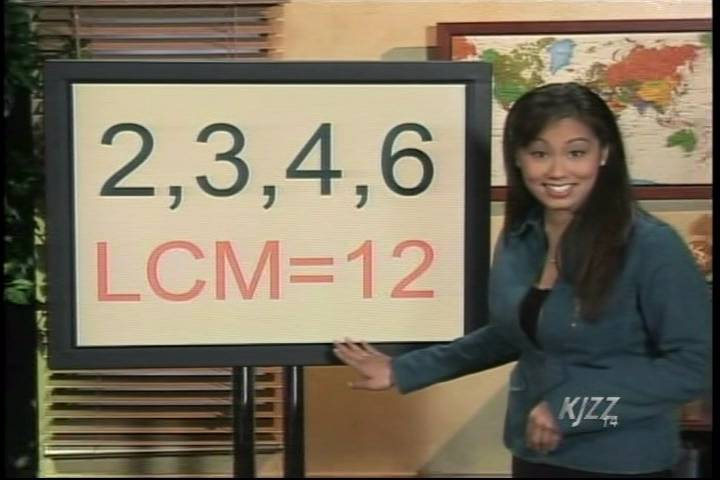 I like maths. I wasn't always good at it, but I've always tried to push forward in it, because I consider it a language, just like any other one. The reason I like maths is because it allows you to communicate in simple terms.
I like maths. I wasn't always good at it, but I've always tried to push forward in it, because I consider it a language, just like any other one. The reason I like maths is because it allows you to communicate in simple terms.
One of my favourite concepts in maths is the lowest common denominator (LCD). It brings complicated things down to a communicatable level.
I think that in life common denominators are very important. When growing, what is the simplest thing you need to do to achieve that? What qualifies success? What does your brand constitute of? What is culture? Etc.
Now in many cases the LCD can be something like people, money, quality, but the question again becomes what the LCD of e.g. people is. Is it effort? Is it education? Is it a skill-set? Is it training? You can always bring it down a level until you reach the point where you can in all essence write a manual for it.
And at times there are things that you don't want to bring down to the LCD. Love for instance, success, beauty, etc.
If you brought them down to the point that everyone could replicate the LCDs, then they would be nothing special. Still it helps to know for yourself what the LCD of love is. What makes you love a person, what makes that person love you? That's a tremendous knowledge to have. Similar to what makes you successful and what doesn't.
Food for thought…
The picture is courtesy of j-archive.com.
Filed under: branding, culture, design, entrepreneurship, Franchising, human resources, interlude, operations, retail, self-development
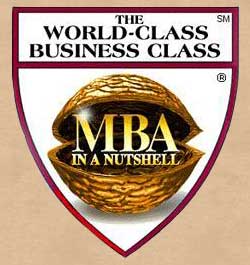 OK, I know I said I was going to break for 12 days. But it's just to tempting to blog (I need to find some kind of bloggers-anonymous meeting). In any case, I'll try to restrict myself to reproduced content only—no original stuff! Here's a good comment I found on writing marketing plans. From mooders @ askmefi:
OK, I know I said I was going to break for 12 days. But it's just to tempting to blog (I need to find some kind of bloggers-anonymous meeting). In any case, I'll try to restrict myself to reproduced content only—no original stuff! Here's a good comment I found on writing marketing plans. From mooders @ askmefi:
Okay. In a nutshell, you need to:
a) Define the current state of the market - your competitors, the industry, the problems your products or services are intended to solve, the Political, Economic, Social and Technological contexts within which you operate and so forth. This is the Marketing Audit
b) Next, you need to define to whom you are marketing. Define the industry, define the sector within that industry, e.g. Financial Institutions and retail banks with significant offshore presence.This is your Segmentation and Targeting
c) Define how you will position your product or service in the minds of the target customers. This is your Positioning
d) Write down what you need your marketing plan to achieve - increased revenue, increased customer base, increased feedback, increased market share and so on. Make these Marketing Objectives S.M.A.R.T.
e) Write descriptions of the following:f) Calculate your budget to do all of e) and achieve all of d)
- e1) Product / Service
- e2) Pricing strategy
- e3) Distribution channels
- e4) Promotional activity - how / where / when / what you will advertise your product or service and its features and benefits
g) Assign roles, responsibilities and timelines to each of the Objectives and any other activities defined above
h) Define some means of measuring progress against those Objectives and controls to implement to minimise the chances of straying too far from them
Bare bones, this is enough to be a marketing plan. In terms of numbers, you need to use as many real, hard numbers as possible and make sure you detail where the numbers come from and the assumptions you have made in drawing those numbers up. You could add this into the appendix of the overall plan.
For more detailed info, I suggest you pick up a book or two on marketing plans. Something like this would be enough for your purposes. If nothing else, google for 'marketing plan template' which will provide a fair few resources for headings etc.
Thanks mooders!
The picture is courtesy of milosobel.com
Filed under: business strategy, entrepreneurship, marketing, Research, retail, tools
Hello,
In this piece, I am planning to discuss my current thoughts about my thesis, this blog, and my plans for the future.
I suppose, to a great degree I like to be a focussed person. I like to have goals, pursue them, and not get too distracted by things. It's kind of a silly attitude, because life is an exercise in overcoming distractions. As Fred Wilson wrote recently about something that Dick Costolo, co-founder of FeedBurner, said:
"A startup is the process of going down lots of dark alleys only to find that they are dead ends. The art of a successful deal is figuring out that they are dead ends quickly and trying another and another until you find the one paved with gold."I love that quote and I think it's a great attitude in life as well.
But, as I said, I love planting myself behind a project and shutting the door to everything else. I tried doing this here, 8 days ago, and, as a result, underwent a pretty amazing productive period since then. So what are my plans for my thesis?
My thesis on funding high-tech start-ups
As I said, 12 days break, which would give me another 4 days. Truth be told, I have to add writing a conclusion, writing mini-summaries per chapter, an executive summary, and editing the whole thing into the mix, so I will like likely be busy for another 10 days after that. The nice thing about conclusions is that they are already in your head, summaries happen automatically as you edit a piece, and editing is a perfect all-nighter activity.
The not-so-nice part is that we are currently at 150 pages of material, which would more or less make my thesis a book about innovation, entrepreneurship, venture capital, and incubators.
2 thoughts:
- One of my thoughts is to edit it down to a reasonable size and publish the whole thing as a pdf.
- A second thought is that as I write summaries per chapter, I might as well turn them into blogposts about innovation, entrepreneurship, finance, and incubators, and publish them in the form of regular blogposts on Tech IT Easy.
Which brings me to this blog…
The status of (my blog on) sounds + food and retail
The funny thing about this blog is that it is interconnected with my life. Random readers may think this is a nice (or not so nice) blog about subjects concerning music, food, and retail, but it is in fact, what I see as, one of several stages towards forming a career and a business (or series of) in this industry.
So my head has not stopped thinking about this subject, and I've actually been making summaries about interesting topics, and thinking about the shape of things to come. I cannot interrupt this blog too long, at the same time it is reassuring (to me), that even though my publishing took a break, my mind did not.
Concerning this blog then, I will be back and I already have a huge backlog of material to publish here… looking forward to that!
The status of "real life"
As I speak with friends and strangers about my ideas I also realise that there is much that remains to be done in "real life" also. I believe everything starts with a good business-plan with realistic assumptions about what you want to set up. It is the ultimate "social object" towards getting my plans in motion, convincing partners, investors, employees to work with me.
Questions I have received so far include:
- What type of place do you want to set up? My answer has so far been: probably a night-venue, a restaurant or night-club, or something in between (this may come as a surprise to some of my readers, as I write a lot about retail). Ultimately though, I want to set up a successful venue and am flexible on the format.
- Where do you want to set it up? My answer: I'm flexible, but it depends on where I feel most comfortable to set it up.
- How are you going to fund it? My answer: I'll need to save a bit, but I expect my first business to be sponsored, probably over 50%, and will look for suitable working partners also.
- When do you want to set it up? My answer: 3-5 years from now would a realistic number in my mind.
- When do you want to exit? My answer: Depends on how much fun I am having, as well as other factors. I see myself as both a serial entrepreneur and someone who wants to create great things, and I'll have to find the middle-path between both.
Final thoughts
First thing first. Finish my current project, get a degree, close this chapter of my life.
Intermediary thing, publish blog-posts when I can and want to, in between.
Afterwards, blog more, look for a cool job to gain experience, contacts, and cash. I also want to travel for a bit through Europe to decide on a suitable location, check out different formats, and brainstorm with friends.
And then, take the plunge.
So, à bientôt, I hope!
Vincent
Filed under: About, blogging, business strategy, career, entrepreneurship, finance, Globalisation, horeca, innovation, restaurants, retail, self-development, vision
Metaphor: I am the bunny or rather my thesis is. Everything is progressing well, but of course it's a lot of work. More when I'm done.
(via Kottke)
5 links to let people know I'm not dead:
- How to choose a name for your product / service / business by Scott Trimble - not much to say about it, except it rocks.
- The 8 challenges innovations face by Scott Berkun - there's so much talk about how cool innovation is (flying cars, anyone?), and very little about how hard it is to actually bring it to the market. Exactly the topic of my thesis, btw., mostly focussed on Scott's point 3: "Find a sponsor and funding".
- The 2007 Esquire 100 has some awesome food-related stuff. Namely on Luxardo, Sechuan buttons, New Texas Cuisine, Rum, shrinking cocktails, The Best Breakfast in America (mmmh looks good!), Washington Wine, and other cool stuff.
- Understanding Web Design by Jeffrey Zeldman - "Web design is the creation of digital environments that facilitate and encourage human activity; reflect or adapt to individual voices and content; and change gracefully over time while always retaining their identity." Kind of applies to designing other kinds of interactive environments as well (don't shoot me Jeff).
- Wal-Mart’s Environmental Report Card (NYTimes) - the point is that Walmart is continuously increasing its competitive advantage in the area of green tech, which is sure to affect businesses bottom-line in the future. So get busy!
Filed under: blogging, branding, design, eco-trends, entertainment, finance, food, green, humour, innovation, Links, media, restaurants, retail, Walmart
No comment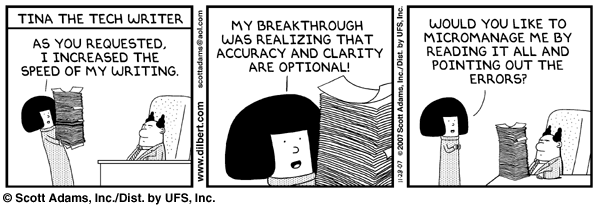
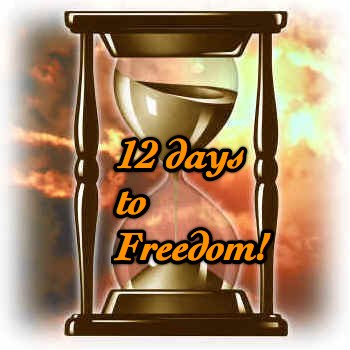 I've set myself a deadline:
I've set myself a deadline:
12 days to finish my thesis on "funding high-tech start-ups" !!
It's perfectly feasible, but only if I don't get distracted. So no blogging for 12 days, and hopefully I can celebrate my freedom by then.
Wish me luck!
Vincent
 A few months ago, I wrote about Starbucks' vertically integrated strategy. This morning, i wanted to link to it, so I did a Google Blog-search. Usually a search for Starbucks and "vertical integration" would yield my blogpost first, but now it's the no. 2 result.
A few months ago, I wrote about Starbucks' vertically integrated strategy. This morning, i wanted to link to it, so I did a Google Blog-search. Usually a search for Starbucks and "vertical integration" would yield my blogpost first, but now it's the no. 2 result.
Somehow, the net has started discussing why Starbucks had a corporate strategy that involved owning all of its subsidiaries and Subway's strategy went a different way.
There seem to be a number of theories on the market. Namely that Starbucks
- … cares less about cross-store cannibalization
- … has a higher need for monitoring
- … relies more on “impulse sales”
- … has higher profit-margins
Some good posts about this are written here and here (both by Josh Wright), here (Stephen Bainbridge), here (Keith Sharfman), and here (Paul Jaminet)
All excellent theories in their own right, and all very rational. However, in my experience, people, and we are talking about people here, often don't behave rationally (at least not as rationally as economic theory dictates). Instead they behave in ways that they are able—either through innate capability or through their environment.
Starbucks did not start as retailer, it did not even start as a store owned by Howard Schultz. It was a coffee-bean roaster and vendor. Its aim was to educate the US-population, which was—according to Schultz—a wide open market in terms of high-quality coffee. Schultz, who first worked there as an employee, started an independant coffee-chain, and only a few years later took over the Starbucks-business (incl. the roasting factory) and the brand-name. But the core-idea remained that it had to deliver quality-products and quality-education to its customers. Along with this, Schultz was highly educated, had plenty of work-experience, and venture capital behind him.
Subway started as a retailer. According to the history, published on their site, Fred DeLuca started Subway's as a 17 year-old and $1,000 starting-capital. Subway had, as far as I know, no world-changing mission. It was a sandwich-store, one of many, and one of it's key assets was to be more efficient and qualitatively better than its competition.
I still think that the stories of these two men, their business-idea, and the environment they started it in, is the key-deciding factor of why one decided to expand wholly-owned and the other through franchising. I haven't studied Subway, but I have McDonald's, and the same dynamic can be witnessed there.
Now, you can go all "economic theory" on this, and focus on points like that coffee is a product that requires much more monitoring than sandwich-ingredients. And I think that's completely correct. Not to mention that Starbucks has a very different employee-based strategy than Subway—they like theirs to be smart and pay them well. And I also think that due to Starbucks's high real-estate presence, franchising for them has become an unfeasible solution. But I think the first two factors are the cause and the latter is the consequence of Starbucks's wholly-owned strategy.
When you start out, whether to franchise or not is a completely personal decision. It comes down to how comfortable you feel about whether you can offer your customers the highest quality possible, while maintaining healthy economic growth.
And your initial decisions will clearly have some kind of lock-in effect later on, which is something I only realised after reading the linked-to blogposts and writing my own.
Filed under: business strategy, coffee, entrepreneurship, Franchising, Globalisation, human resources, operations, real estate, restaurants, retail, starbucks, Subway, supply chain managment, USA
If you read further into the ACNielsen-report (pdf), I wrote about two days ago, you'll have seen that retailers' private label-strategy seems to be focussed on certain key-areas, namely:
- General health
- Weight-loss
- Organics / Fair Trade
- and Food for kids
At the same time, there are lot of savings on the marketing side for private labels. Retailers are in fact huge market research factories—every move that a customer makes in their store, with their products, can be entered into a database and used for future marketing strategies.
And having full control over shelf-space, shelf-placement, and in-store marketing means that the budget for these can be minimised.
All of which has three implications:
- That more of the budget can be allocated to the quality of private label products.
- That it pays off to have an elaborate in-store-system to collect consumer-data.
- And that independent product-manufacturers are perhaps screwed.
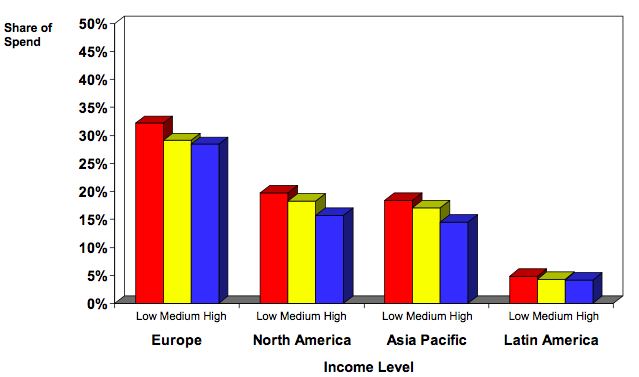
Figure 1: Private label share of spend segmented by income level (source: ACNielsen, 2005)
Of course, this doesn't mean that independent product-manufacturers are completely screwed. It puts pressure on them to become more innovative with their products and marketing than they ever were before. Which is the right kind of pressure.
Final thoughts
There's not much not to like about private labels. In many ways it's a more efficient system. Less time and money needs to be spent on the marketing-side, and more can spent on the back-end—the production. At the same time, independent manufacturers will have the advantage of flexibility. They can (perhaps) adapt quicker to market-trends, or perhaps even lead them.
Not all market-research needs to happen in the store either, some also needs to happen where the consumption happens—at home or elsewhere. And large independent manufacturers perhaps have a better foothold on general trends in society, than retailers, who are mostly restricted to what happens in their store.
(On a related note, one of my early posts on this blog discussed P&G's strategy towards shopper-marketing, worth checking out!)
So it's perhaps not a black-and-white situation. But I think that, looking at Starbucks, which is essentially a private label, that this strategy has considerable merit, because it gives retailers a lot of power over the quality of these products and how these are sold. It essentially shifts the brand up towards the retailer, instead of it remaining on the product-level.
More on this as I come across it.
Filed under: branding, business strategy, food, innovation, marketing, private labels, Research, retail, starbucks, supermarkets, suppliers, trends
Just some random thoughts for this evening…
Imax
Making 3-d films is an expensive and complex process. You need to shoot from separate perspectives, one for each eye. And it requires a specific environment to be viewed in. A dark room yes, a screen, and glasses, but most of all, the distance between you and the screen needs to be as large as possible to get the full 3-dimensional effect.
I think all cinemas should go 3-D. With home-cinemas becoming so accessible and prominent, with movie-piracy, I think the best way for a film to stay exclusive is to make it in a format that is hard to replicate at home, and where it's hard to give a copy to your friend.
I like cinemas, because they are a social experience to be shared with friends. Just like going out clubbing, or eating in a restaurant. It's a third place that has been in constant trouble since the television, the videotape and derivatives, and the internet. I hope that innovation will continue to happen, and, more importantly, will continue to be exploited.
Guinness
 Give me a whiskey over a beer any day… but of all beers, Guinness is probably my favourite. It just feels like a real drink, and I fondly remember discovering it for real in Dublin, Ireland a few years ago. What I also like is that the whole process of drinking it is a ritual.
Give me a whiskey over a beer any day… but of all beers, Guinness is probably my favourite. It just feels like a real drink, and I fondly remember discovering it for real in Dublin, Ireland a few years ago. What I also like is that the whole process of drinking it is a ritual.
Guinness has been around for ca. 250 years, and it's constantly remained a niche-product. Over the last decade or so, it has tried to fight back the competition with a number of varieties, the latest of which is Guinness Red. It's supposed to be a lighter, sweeter version of the brew.
I'm sceptical. I think Guinness should try to remain special and not try to become closer to other, regular beers. But that's just me.
Pie
 Lately there seems to be a revival of pie in US popular media. Last week I saw a movie, called Waitress. It's about a… waitress, who lives with an abusive husband and wants to get out. Her therapy is making pie. Every time she has an experience, she invents a new recipe to match in her head.
Lately there seems to be a revival of pie in US popular media. Last week I saw a movie, called Waitress. It's about a… waitress, who lives with an abusive husband and wants to get out. Her therapy is making pie. Every time she has an experience, she invents a new recipe to match in her head.
It's a sweet movie, worth a watch.
And then there's a new series this season, called Pushing Daisies, which is about a guy who has the power to bring people back to life… but only for a minute because then someone else has to die… it's complicated. But he also owns a pie-shop, and again this whole series is quite ingrained with this whole pie-ritual.
Not a bad series either, light entertainment until Lost and Battlestar Galactica start again.
But really, I don't get what has brought about this focus on pies and wish someone could explain it to me. What's the big deal?
Have a nice weekend!
Filed under: branding, culture, entertainment, food, innovation, interlude, media, retail, trends
 It's perhaps a curious thing to say, but I think a lot of things in life depend on semantics—the meaning of words.
It's perhaps a curious thing to say, but I think a lot of things in life depend on semantics—the meaning of words.
I should actually be calling my blog "Horeca & Retail" Blog, just because the word horeca describes what I want to do so much better. Horeca is an (Dutch afaik) umbrella-term, that describes the businesses mentioned in the title: hotels, restaurant, and cafes.
I picked "food" instead of horeca, because I couldn't find an English term that described what I wanted as well. There's restaurants, gastronomy, cooking, catering, cafes, etc. but all that is too specific. Incidentally, if a knowledgeable Brit, American, or international happens to know an anglo-term as suitable as Horeca, please let me know!
Whenever I discuss my business ideas with my dad (much more inspiring than any internet-based research), we don't talk about food or retail. I begin with that, because that's what I cover in my blog, but the conversation always evolves to how to run a café or some other kind of drink-related entertainment-venue. In other words, we talk "horeca."
Here's some stuff I learned from him (he used to own some bars and cafes):
- Try to imagine your place as a theatre - you're putting on a show every night.
- Personality of ownership is important - whenever he was active in this business, he tried to look for good partners: people who understood this world and had certain social qualities.
- When looking for investors, look for breweries - this is something I'll have to research.
- Location is not the top-priority for a horeca-venue - people will come if it's worth it.
- Horeca is a troublesome business - somewhat of a general statement, which I hear from a lot of people. Basically, it suffers from weird people-related issues—lot's of stress, lot's of alcohol, terrible working-conditions, funny contractual agreements, etc. And lot's of businesses go bankrupt (well, what else is new).
So, over the next few months, next to continuing to cover certain, universally applicable, retail-topics, I'll try to find out more about how to run entertainment-venues.
Filed under: About, catering, entertainment, entrepreneurship, Europe, horeca, human resources, restaurants, retail, vision
Essentially private labels, also sometimes called house brands, are products branded either with the name of the retailer, or, at times, sharing some kind of umbrella-name, decided by the distributor or otherwise. But what private labels really represent, to me, is the ultimate example of a power-struggle between a retailer and suppliers. Sometimes, but not always, it also means that some kind of vertical integration has been taking place between retailers and manufacturers, or, at the very least, packaging plants.
For now, I'll just be looking at some stats on private labels. At a later date, I'll take a look at more supplier-retailers dynamics, branding strategies, etc.
Geographic share
According to an ACNielsen report (pdf), the global* market-share for private brands was 17% in 2005 (* global meaning 38 countries and 80 categories), and had grown 6% that year.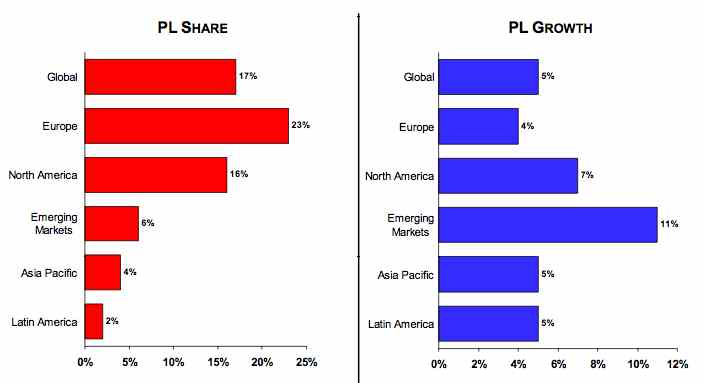
Figure 1: Share & growth rates of private label by region (based on value sales) (source: ACNielsen, 2005)
Europe has the largest market-share with 23%, and Latin America the smallest, with 2%. Top countries included Switzerland, with 45%, Germany, with 30%, and the UK, with 28%. The largest Private Label growth happened, unsurprisingly, in emerging markets (11%) like Croatia (77%), Greece (24%), and Thailand (18%).
One big growth-contributor in Europe is the strong growth of hard discounters, such as Aldi or Lidl (both German chains), who are present in every European country and expanding rapidly. With Aldi, for instance, private labels make up 95% of sales.
Private label foods
Category-wise, refrigerated foods have the largest overall share of private labels, namely 32%. Complete ready meals take the lead here, with an average of 47% private label-share. In the UK, 97% of ready-meal sales are in fact private label.
Another significant private label food, or rather drink, was milk, of which private labels make up 43% of sales.
Figure 2: Value shares of private label by category (source: ACNielsen, 2005)
Other high private label food-products include frozen meat (39%), fish (39%), and vegetables (38%), and 37% for shelved vegetables. Frozen pizza is at number 27, with 17%, tea and coffee at numbers 37 and 38, with 14% and 13% respectively. Wine is at number 44, with 12%. And Beer is all the way at the bottom, at number 74 with 3% !
Among the fastest growing foods are drinking yoghurt (28% growth), baby food (20%), chocolate (13%), and water (13%).
Pricing trends
One of the strengths of private labels is of course that they are cheaper, on average 31% less than manufacturer brands. Emerging markets showed the biggest discount, with PL-goods costing 41% less on average. Europe wasn't lagging in this respect either, with an average price difference of -37%. On a country level, Greece, Australia, and Germany were taking the lead with, respectively, -48%, -47%, and -46% discounts (compared to manufacturer brands).
Figure 3: Price differential of private label by category (source: ACNielsen, 2005)
Again, concentrating on food-categories, the products that received the biggest discounts were Sports Energy Drinks (-55%), carbonated beverages (-43%), cereals (-40%), wine (-38%), and tea (-37%). Food-categories taking the least in discounts, included chewing gum (+7%), wet soup (no difference), meat (-2%), and ready meals (-5% <- I guess that explains their high market-share).
Final thoughts
That market share is increasing more quickly in emerging countries is not surprising. Retailers there will likely not be mature and/or consolidated enough to focus on such a strategy, but this is clearly changing.
Germany's dominance is also interesting, as both Aldi and Lidl originate from there. One of my next posts will be on Ikea's European growth and Germany's also very strong there, which suggests a certain preference for low prices with German customers.
Switzerland is still somewhat of an enigma, but I'll try to find out more about it.
In terms of products, both the dominance of private labels amongst ready-made meals, and that their prices are quite similar to regular brands, is very interesting. It could suggest that customers either don't care much for quality and brand-differentiation in that sector, or that private label brands are actually quite good. The price-level would suggest the latter conclusion.
Generally speaking, refrigerated goods are different in the eyes of consumers, I think, less scrutinised perhaps, and worthy of more investigation. Milk is of course similar to water, and hence not really a product where brand makes a huge difference.
What else? Certain beverages, like coffee, wine, and beer are quite interesting, as their private label share is quite low. This would suggest a high brand-sensitivity in these sectors. The low percentage for beer (3%) is certainly striking.
More on private labels as I come to it.
Filed under: branding, business strategy, Europe, food, geography, Globalisation, logistics, marketing, private labels, Research, retail, supermarkets, suppliers, supply chain managment, trends, USA
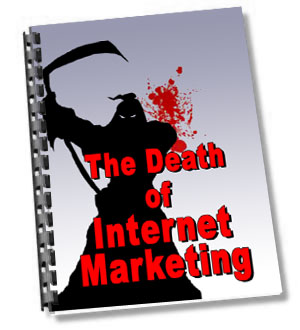 This week, I seem to be taking somewhat of a personal angle, where I express my own views, rather than report and analyse those of others. I'm not sure if this is good or bad, but, after reading Fred Wilson's view on it, I think it's sometimes necessary to instil some personality into a blog.
This week, I seem to be taking somewhat of a personal angle, where I express my own views, rather than report and analyse those of others. I'm not sure if this is good or bad, but, after reading Fred Wilson's view on it, I think it's sometimes necessary to instil some personality into a blog.
One thing in life that I am very sceptical about is marketing, and there is one particular kind that annoys me the most. I call this argumentative marketing, and I define arguments as:
Constructing a logical set of information, meant to replace the logic present in the mind of the audience.In other words, arguments often serve the purpose of distracting or confusing the person or group they are targeted at.
That it is not meant as arguments not containing any information! No, I think knowing that a knife can cut through a metal can of food is quite interesting! But if I were a chef and all I wanted to do is chop vegetables, and I already had a perfectly good knife, this information could also be considered distracting.
Arguments are very prevalent in our global society. Not only is advertising the number one business-model in on- and off-line media, but there are quite a number of jobs centered around constructing arguments. Take students, lawyers, politicians, consultants, marketeers, sales-people, a certain type of manager, etc. And let's not forget bloggers!
And I think the market for arguments, people, is quite saturated with them also, meaning that the value of arguments is constantly decreasing.
As always, this means that other opportunities open up, which some marketeers are already exploiting. Let's not market at all!
One way to do that would be to simplify the argument to the essentials. Have the product or service itself tell the story, by illustrating clear and simple values, which customers can grasp and share with the rest of the world.
Examples are:
- Google-search: just search
- iPod: 1 button-play
- Fast-food: colourful, good-smelling food and drinks, easily accessible (there does seem to be a trend towards more info, but I'm seriously doubting that it will last, or that it matters to 98% of customers)
- Amazon's Kindle (still sceptical): one click shopping anywhere (in the US)
- And, last but not least, the lack of title-sequences in the series "Lost," and pretty much any movie or series afterwards!
The picture is courtesy of allaboutadtips.com
Christine Huang, at the "Trends & Innovation agency", PSFK, points us to a commercial film, shot by Unilever's Axe and featuring David Spade. The subject is… I would guess, food presented in a dirty and sexy package.
Just like Christine, I'm not sure I get it. I don't think it's aimed at European audiences either. But, all in all, definitely an interesting 5 minutes of your life.
The only question I have: So are you guys gonna take a shower now or what?
Incidentally, if this is the first post of mine you're seeing today, also check out my post on Amazon's Jeff Bezos just below.
Amazon's Jeff Bezos on strategy & innovation (not Kindle-related!)
0 comments Posted by Unknown at 1:44 PM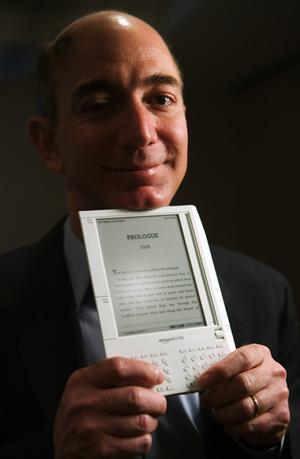 I'm writing this post for two reasons. One is that I am incredibly interested in the subject of leadership and try to learn about it in whatever way I can. A second reason is that, even though my main focus on my blog is food and retail, what Matthias calls "old economy" (thanks Matthias!), I try to also be very aware of "the past, present, and future of this industry," and (internet-)technology plays very much a part in the future of retail.
I'm writing this post for two reasons. One is that I am incredibly interested in the subject of leadership and try to learn about it in whatever way I can. A second reason is that, even though my main focus on my blog is food and retail, what Matthias calls "old economy" (thanks Matthias!), I try to also be very aware of "the past, present, and future of this industry," and (internet-)technology plays very much a part in the future of retail.
In terms of leadership, Amazon's Jeff Bezos is a good person to study—a man who created perhaps the most iconic garage-based venture since Apple, and who managed to not only take his company, Amazon, public, but also stay on as CEO until now, something that is rare amongst founders. In terms of retail, Amazon is itself great company to study. It has transformed the book-industry, and is doing amazing work in terms of providing infrastructure for web-based infrastructure. And, even though they are not as yet selling any books in the Netherlands. I'm hoping that SEPA, to be introduced next year, will change that.
Before I continue, this is not really a Kindle-related post. While we're on the subject, however, let me say that I'm a big fan of ebook-readers. At the same time, there are certain advantages to paper-reading, which I'm especially experiencing since I started my own blog—namely that I can write on them. I know I can take notes on Kindle, but it's not the same. And I think the price-point of either the device ($400), or the books (a $10 intro-price), or both, is just too high for something that can be produced in mass and has no printing-, and hardly any distribution-costs attached to it.
Speaking of notes, I took some while reading a nice HBR-interview with Jeff Bezos, in which he discusses his take on strategy, innovation, customers, ... and not Kindle. I'll share these, and my thoughts on them, with you now.
Innovation at Amazon
There are generally two types of innovation, the radical kind and the incremental (or process) kind. My general belief is that, while retail on the internet radically transformed the way we shop, and will continue to do so, ultimately it is an evolution in process. Instead of giving our credit-card to the clerk, we type in a number behind a screen, etc. etc. And, since the internet has taken off, this kind of process-innovation has become much more prevalent. Now, instead of clicking 5 times to buy a product, I can click once: yay! Before you ask, "so what is 'radical' innovation to you?" I'll just say: "Space, flying car, people living under water, that kind of stuff. So get busy!"
Amazon has of course just announced the Kindle, which could be interpreted as an innovative move. But again, what will make this innovation shine, if it does, is Amazon's incredible process-strength, namely that they can deliver the device to nearly every household in the Western world at beautiful economies of scale. For now, these are paying of for Amazon, but knowing their business-model, it's pretty certain that this will pay off for consumer too… eventually.
What I like about Amazon (and got from the interview) are that they have an incredible experiment-based culture and generally take a long-term view—both rare with public companies. In terms of experiments, these are encouraged on a company-wide level, and due to the nature of experiments, are both had to predict and not unknown to fail. One example of an experiment which became an enormous, but unplanned, success, is the Amazon-associates program.
As far as time-frame is concerned, innovations at Amazon usually take 5-7 years before they make any meaningful impact on the company's economic situation. This is a big risk and is offset in a number of ways. One is to minimise the costs of experiments. Amazon has a web lab just for that purpose, which undertakes these experiments on a massive scale, collects real usage data on what works best, and is constantly trying to push the costs of these experiments down. Again, taking a long-term view, it helps when building innovation on things that won't change in the next 5-10 years. For Amazon, these are basic customer preferences, such as: choice, low prices, and fast delivery (hello Kindle?).
There are three more core-attitudes, which I think have a big impact on the way innovation takes shape at Amazon. One is, to always ask the question "why not?" According to Bezos, the biggest mistakes at Amazon come from not doing something, rather than taking the risk. And asking "why not?" instead of "why should we do it?" opens up a whole other universe of possibilities. Similarly, there are lot of difficult decisions that Amazon has had to make over the years, such as allowing reviews on their site. The vital question there was "what is better for the customer?" Last, but not least, I like this line in regards to making experiments a success: "Be stubborn on the vision, and flexible on the details."
Strategy at Amazon
The other part of innovation is execution, some of which was already discussed above. Much of decision-making comes out of the way a corporate culture is shaped. Some cultures are hierarchical, some are flat, some are individualistic, some are collective. From my understanding of things, Amazon has both a departmental structure (which would suggest some hierarchy) and takes decisions collectively. Both senior management and departmental management have mechanisms through which this collectivity manifests itself. Seniors meet once a week for four hours and once-twice a year for a two-day meeting. Homework is assigned before and the latter type of meeting deals mostly with long-term issues. Department-management has a similar system.
Some more general characteristics of corporate culture were mentioned in the interview, namely that they can be incredibly stable over time, and are self-perpetuating in the sense that they attract people who like that culture (and repel those that don't). While a company's corporate culture is probably the hardest to replicate, and can thus be a tremendous competitive advantage, the rigidity of the culture can both mean that there are limits to what it can do (and should do), and it can sometimes hamper innovation during turbulent times. At the same time, a culture can by nature be open to change, which should overcome some rigidity.
A few weeks ago, on my blog, I wrote a post on Porter's five forces in which I outlined what I think matters in strategy, but also that it pays off to stay close to customers. Jeff Bezos shares a similar view-point, for a number of reasons. One, customer-needs change more slowly than a lot of other things, e.g. tech; and two, following the competition doesn't work well in fast-changing environments, e.g. tech. A third point is that being too competitor-focussed can result in a passive attitude once a certain dominance has been reached in an industry. You can argue about this either way, but when you look at certain large companies (no names), this "hey, we won, so why innovate?"-attitude, is definitely one that is recognisable.
One way that Amazon tries to stay close to customer-needs is by enforcing rotation. Every new employee has to spend time in their fulfilment-centres with the first year, every two years, employees have to do two days of customer service, and everyone has to be able to work in a call-centre. That includes Jeff Bezos.
Finally, he also had some advice as how to survive the transition from the founder of a start-up, to the CEO of a multinational, public company. It's simple (yeah right!). When you start, the main question is "How?"; as you grow, the question is "What?"; and when you're huge, the question becomes "Who?" There you go, the secret to being the leader of a big company.
Final thoughts
One of the weaknesses of secondary information, such as what came from this interview, is that I (and you) have to trust everything that is in the article. I can't ask follow-up questions and can't tell, by body-language, tone, or otherwise, whether some points are more important than others, or more true than others. Therefore I try to be careful to treat each piece of information as part of a greater whole. In other words, I may come across information that conflicts with what Bezos said in the interview. If it's noteworthy, I'll write a new post about it. One piece of important data, released perhaps a month after the interview, is the release of Kindle, which, as mentioned, I am sceptical of.
Two things I learned from the interview is that innovation takes time, especially to make it economically viable, for both the business and the consumer. In my opinion Kindle, in order to fit the philosophy of Amazon (which is not Apple after-all), has to drop in price, as do the books. It's a matter of ethics, of being customer-focussed, and of being a process-innovator. I can only assume, that over the next years, this is exactly what will happen.
The other thing I learned is to constantly be open to innovation that can benefit the customer. This point has been made many times in the words above, yet it bears repeating. A company can be incredibly rigid, the bigger it becomes. Competition can become incredibly threatening. Technology can change from one day to the next. But what doesn't change is that customers will pay you for products that make them happy. And I fear that a lot, a lot of businesses have forgotten that as they became big, arrogant, and focussed on anything but what customers want.
Finally, while I may be focussed on "old economy" topics, I think Amazon teaches some interesting lessons on how to remain high-touch in a high-tech environment. As such, this certainly won't be the last time I touch upon the topic of technology in retail.
Further reading
If you're interested in the topic of leadership, you mean also want to check out a list of free podcast-interviews with a number of CEOs, ranging from Google's Eric Schmidt to, indeed, Jeff Bezos, which I posted on Tech IT Easy a few months ago. Worth a listen. Oh, and don't forget to check out the original article on HBR.
This article is mirror-posted on Tech IT Easy.
Filed under: Amazon, books, business strategy, customers, e-commerce, entrepreneurship, ethics, human resources, innovation, logistics, management, media, new business development, operations, retail, technology
 Today should be called Meta-Monday… I seem to be in some kind of reflective or introverted mood. And as any blogger probably knows, moods and blogging, that's like a burger and fries—they go hand-in-hand. But no worries, tomorrow it's business as usual.
Today should be called Meta-Monday… I seem to be in some kind of reflective or introverted mood. And as any blogger probably knows, moods and blogging, that's like a burger and fries—they go hand-in-hand. But no worries, tomorrow it's business as usual.
One thing I discussed in my last post was finding a job. Yesterday, during a jog, I thought it would be a good idea to crowdsource my application-letter when the time comes. I'm not sure if it's the best idea—no one I know does it, and probably for a good reason—but I'll consider it.
Another thought I had yesterday, was on the type of job I would be looking for. I already wrote about "one with broad development-opportunities," but that doesn't say anything about where to start. Yesterday, I actually argued with my father about this, as his vision of my vision is somewhat different of my vision of my vision—if that makes sense. Essentially the conversation went somewhat like this:
Me: "So, what would you guys think about me getting a job at a place like Ikea (just an example, don't get any ideas!)?"
Dad: "That's idiotic. If you want to start a restaurant, you should just start one. No detours. What does Ikea have to do with a restaurant anyway?"
What does Ikea have to do with a restaurant anyway?
That's a good question. First of all, I'm pretty sure I don't want to start a restaurant. Everything I've seen so far leads me to believe that it is a terrible environment: People are stressed and unfriendly, chefs are arrogant, long hours even after a start-up is no longer a start-up, etc. I might change my mind, but that just doesn't fit my vision.
Second, my attitude on business is that the product doesn't matter. But that said, I am more passionate about some products than others, namely food, media-related stuff, technology, etc. and I care a great deal about the atmosphere of the place.
So what does Ikea have to do with a restaurant? It sells goods to customers, which it sources from suppliers. It thinks about the customers, it competes with other businesses, it expands nationally and internationally, it works with suppliers, etc. Not to mention that it also has a restaurant. It's a business and its principles are just as applicable to a restaurant or any comparable business. The product doesn't necessarily matter.
That doesn't mean I want to work at IKEA per se, I'm making a different point.
Meet Mr. Generalist
The stereotype of a generalist is probably that he or she cares about everything and anything. I, being a generalist myself, don't agree with that. Instead a generalist, to me, means:
"To care about nothing specifically, instead to care about everything that produces an outcome. In business this means to care about the four dimensions that I mentioned in my last post: the components of the business; the value chain; the past, present, and future of the industry; and how people fit into the picture."That said, nobody cares about nothing and the more experience you get, the more you will care about certain areas more than others.
In terms of people, I am constantly on the look-out for specialists—people with in-depth knowledge about a certain field—and to some extent generalists—people who also have a broad view about what makes a business function. The phase and size of a business certainly affects the need for either type of person. I can't say much more about this, except that just to find the best (wo)man for the job, is always the right attitude.
In regards to finding a job, being a generalist (probably) puts me in a similar conundrum to when I studied strategic management. There are no starting jobs as strategists, and I'm not sure that—at least in large firms—there are starting jobs for generalists either.
I think that I will have to decide in what function I want to start in and see what happens from there on in. I'm thinking logistics, but I will keep an open mind.
The image is courtesy of acponline.org
Filed under: About, business strategy, career, entrepreneurship, operations, retail, self-development, vision
 A blog is a service—both to me, and to you, the reader. To me, it serves as a way to collect a large amount of information, and, more importantly, process it so that it stays in my brain. The better, and more focussed the information is, the more it helps me, and the more it becomes useful as a general information-source for you too. There are a couple of specific goals I have, which will certainly affect the status and value of this blog. These are, as follows:
A blog is a service—both to me, and to you, the reader. To me, it serves as a way to collect a large amount of information, and, more importantly, process it so that it stays in my brain. The better, and more focussed the information is, the more it helps me, and the more it becomes useful as a general information-source for you too. There are a couple of specific goals I have, which will certainly affect the status and value of this blog. These are, as follows:
1. Develop a framework of how everything in a food- and retail-business fits together
The reason why I write about a large number of topics is because I see any business as system or a machine made up of a number of components. I need to think on four dimensions: the business-components; the value chain; the past, present, and future of this industry; and how people (incl. me) fit into the picture.
Implication: This simply means that my broad coverage of topics will continue, but that the implicit understanding is that it all needs to fit into one of these four dimensions. It also means that, in addition to researching these topics, I need to start converting the broad framework I have in my mind, to paper.
2. Gain practical experience
I see this on two levels. One, I need to seriously understand the process of retail or food business from start to finish. The best way to accomplish this is to learn by doing. This can be achieved in two ways: the more logical one would be to work at a business that offers a good amount development opportunities—allowing me to see many aspects of that business; and eventually I see myself starting my own business also. The second reason why practical experience is important is reputation. This business in particular is pretty resource-intensive. To start a business you need to have access to a good network of people, and investors. Both trust you more, the more practical experience you have. Put your money where your mouth is.
Implication: This is still some months off, because I still need to finish some business before that. When it does happen, I think it will affect the blog in two ways: one, I will have less time to blog. And two, I will have more practical data that I can share (within reason).
There is a third point—starting my business and everything that involves, but that's a topic for another day. For now, if you have questions or comments about the above, feel free to share.
This blog will continue as usual for now. Expect a new post tomorrow!
The non-sensical picture is a few months old… until I get my camera back from the store (any week now), my ability to draw and and scan into the PC is somewhat constrained.
Filed under: About, blogging, business strategy, career, entrepreneurship, management, operations, restaurants, retail, self-development, tools, vision
5 Links: human sigma, link-baiting, neuroscience, brand experience, wine
0 comments Posted by Unknown at 11:47 AM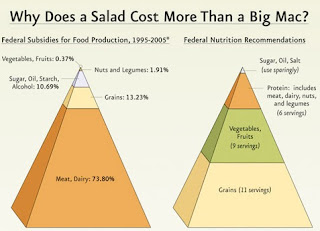 While I'm stuck on writing some other posts—the idea is there, the execution some way off—it is time for another collection of links.
While I'm stuck on writing some other posts—the idea is there, the execution some way off—it is time for another collection of links.
- Using Human Sigma for measuring customer engagement - Mitch Owen reviews a new book on the market, that suggests that evaluating our efforts at customer satisfaction happen on four levels: Confidence, Integrity, Pride, Passion.
- How to coast to a writing career - Valleywag writes an insightful post (for once) about what matters when blogging. I like "AVOID: Blogger ego. If you do blog, just write and forget about it. Don't reply to your comments with more than "Good point, h8rboi, thanks. Don't troll other bloggers for links, or try to get onto Techmeme by posting about whatever's already there. ... People in the real media don't care what your Technorati rank is, they'll just Google you to see what you write." That said, I have no intent to engage on a writing career.
- Mind hacks: an interview with Jonah Lehrer on neuroscience - What I like: "Artists are constantly being forced to reverse-engineer the brain. By reverse-engineering the art - by trying to understand why, exactly, it resonates with us - we can learn about the mind."
- Thirteen examples of successful brand experiences - could be filed under architecture. The British design council points us to 13 different "experience-castles" (my own term), where customers can be enchanted.
- Calculating the carbon footprint of wine - What can I say? It's the new world! Some key-points: organic is not as efficient as we think; distance matters; packaging matters.
- Bonus Link: Why does a salad cost more than a big mac. - A picture says more than a 1000 words. This is just as applicable to Europe btw. Thank Wolsey for inventing the subsidy!
Enjoy! More of this: check out the S+FnR bookmarks—updated 24/7 !
After my little over-academic look at the cost of real-estate this morning, I thought it would be nice to lighten the mood a little. Check out the video where:
"The New Frontier casino-hotel was imploded early Tuesday, giving a violent end to the second property to open on the Las Vegas Strip. This, to make way for a multibillion-dollar resort bearing The Plaza brand, set to open in 2011."(via Missethoreca.nl)
On a related, but perhaps more aesthetic, note, you might want to check out New York Magazine collection of vintage videos on architecture, ranging from the Brooklyn Bridge in 1899 to the construction of the World Trade Center in 1966-73 (via Kottke).
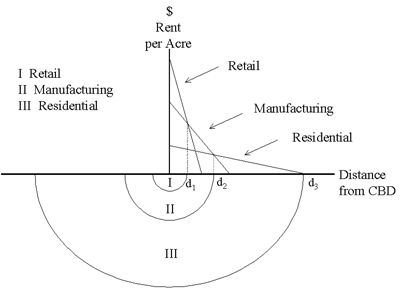 Still following the great book on Retail Marketing, by Dr. P. McGoldrick, this time I'll cover the different types of cost that are included in buying, developing, and running retail locations. For previous coverage, check out post I and II
Still following the great book on Retail Marketing, by Dr. P. McGoldrick, this time I'll cover the different types of cost that are included in buying, developing, and running retail locations. For previous coverage, check out post I and II
Before buying property, considerable data analysis must happen in regards into estimating turnover, which comes from data on competition, accessibility, and population. And a calculation of costs must happen, least of which is the purchase price, and more complex will be three types of cost: development costs; running costs; and contextual* costs (*: for lack of a better word).
Much of this cost data will likely come from negotiations with site developers, lease owners, and an estimation of the costs involved in the development of the location.
Naturally, with the proliferation of the internet, there are plenty of databases that offer interested parties an overview of typical sums per region or type of location. Though the following are mostly aimed at private individuals, both My-Currency and Zillow offer these types of services, and Jeremy Fain wrote about a French service, called BMyKey.com on Tech IT Easy.
Purchase price
Traditionally, rent bid theory explains a lot of price-differencials within an inner-city environment. Variety and women's clothing stores would typically pay the highest rents and grocery stores the lowest. With the emergence of superstores and their focus on out-of-town locations, this formula can not be applied so generously anymore, though, as mentioned, I think that it should logically still apply to inner-city environments, and probably to inner-malls ones also.
And while buying the property may cost a certain sum, it is not atypical that the three of the following types of cost will far outweigh the initial purchase price.
Development costs
Three types of estimates need to be made here: design estimates, which include the costs of the architectural work; bid estimates, which involves negotiating the costs of labor, material and equipment; and control estimates, which are the costs of monitoring the project-development. For more info on these, check out this document.
In addition to this there are a number of costs that can be substantial, but are sometimes not taken into account. One is site preparation, which be steep, especially if the land needs to be converted or extensive demolishing needs to take place.
In addition to this local authorities can impose a number of restrictions on the height of the building, other architectural and landscaping aspects, and demand significant concessions from retailers to build there. All of which can at the very least slow down development considerably.
Running costs
The choice of location, site, and design can greatly affect the cost of running the operation once it's constructed. For instance, multiple floors and parking will mean that lifts will need to be maintained regularly. A location with a high crime-rate will require higher security-costs and lead to more theft. And high employment and income areas will also lead to issues regarding staff recruitment and retention.
Contextual costs
I made up this term, but it actually includes costs like delivery, promotion, and the impact on other branches of the business. Delivery costs are affected by the location choice of the outlet—how accessible it is via road or otherwise; how remote it is from the main distribution network. Promotion costs are also a factor (but a topic for another day). And the impact on other branches are a very important factor to consider. The higher the existing market-share in an area, the greater the potential loss, though, according to the book, this is often accepted as a necessary trade-off to a high growth strategy.
Final thoughts
Clearly real estate is something that needs to be thought about as part of a long-term strategy and with the help of professionals. And some of this is probably not applicable to start-ups in the retail-space. That said, choosing a location by itself is already a science—whether you rent, lease, buy, or build it. And both the direct costs—purchase or rent—and indirect costs—development, running, and contextual—will play an important part in the decision-making and business-planning.
Until now, I have mainly covered the issue of competition and cost in relation to a real-estate strategy. I'll probably not go into population and accessibility just yet, and will instead focus more on more complicated tools used in real estate strategy, beyond the simple checklist, which I covered in my first post on this. These include mathematical, mapping, and some other models, as well as, hopefully, some more data on the role of IT in this process.
For a more in-depth reading, I of course recommend buying the book on Retail Marketing, which largely inspired this article.
Filed under: books, business strategy, entrepreneurship, finance, geography, logistics, new business development, operations, real estate, Research, retail, supermarkets, tools